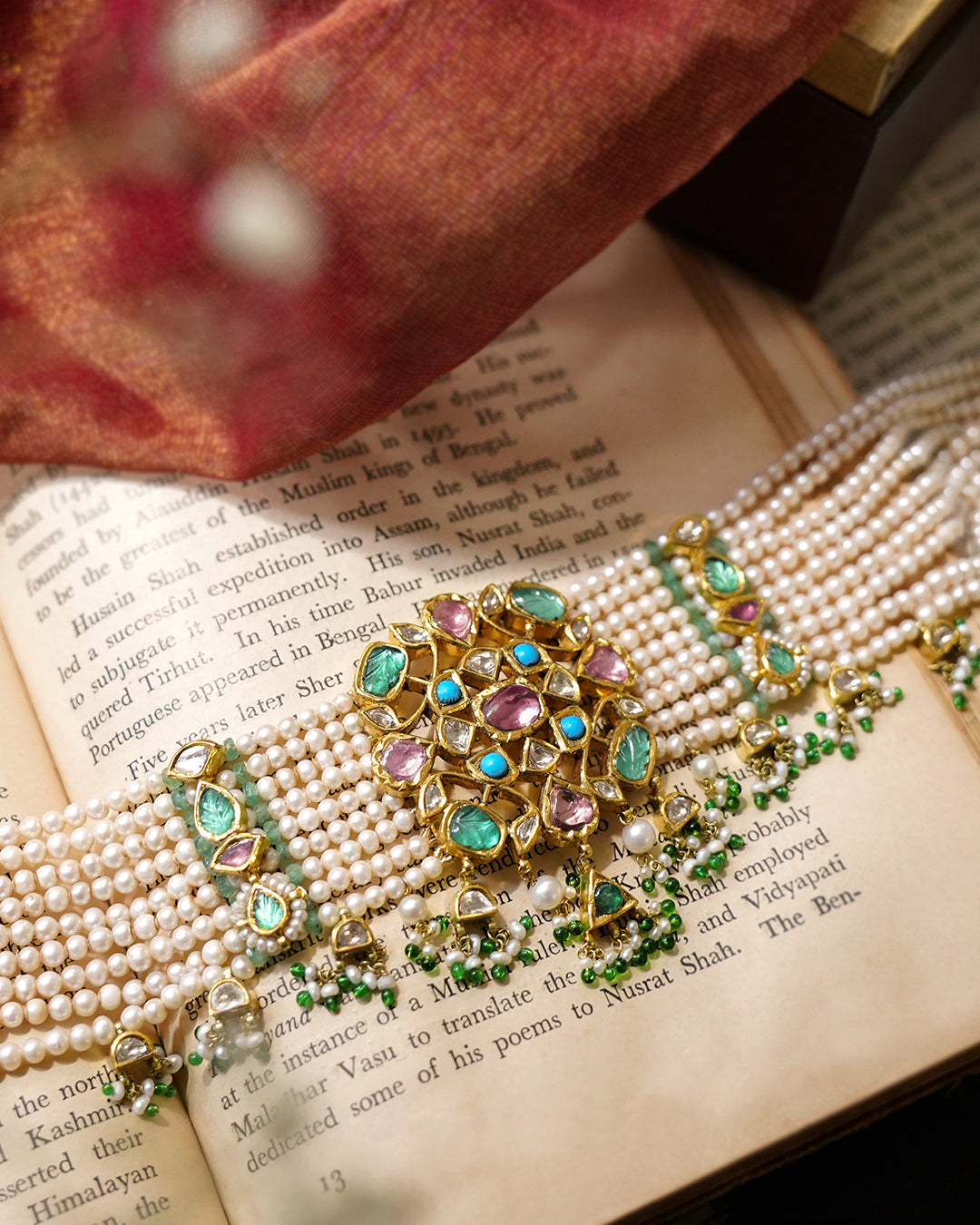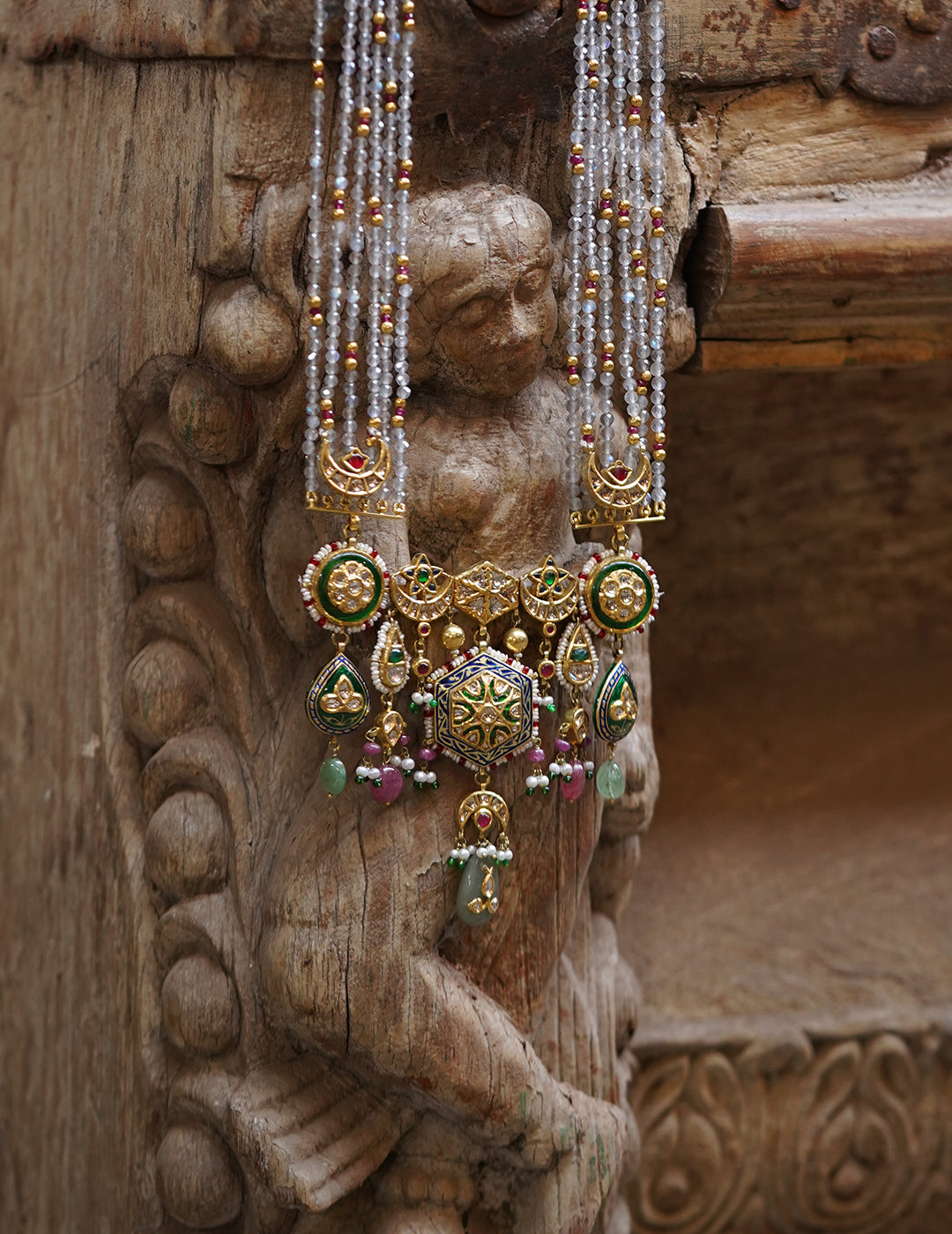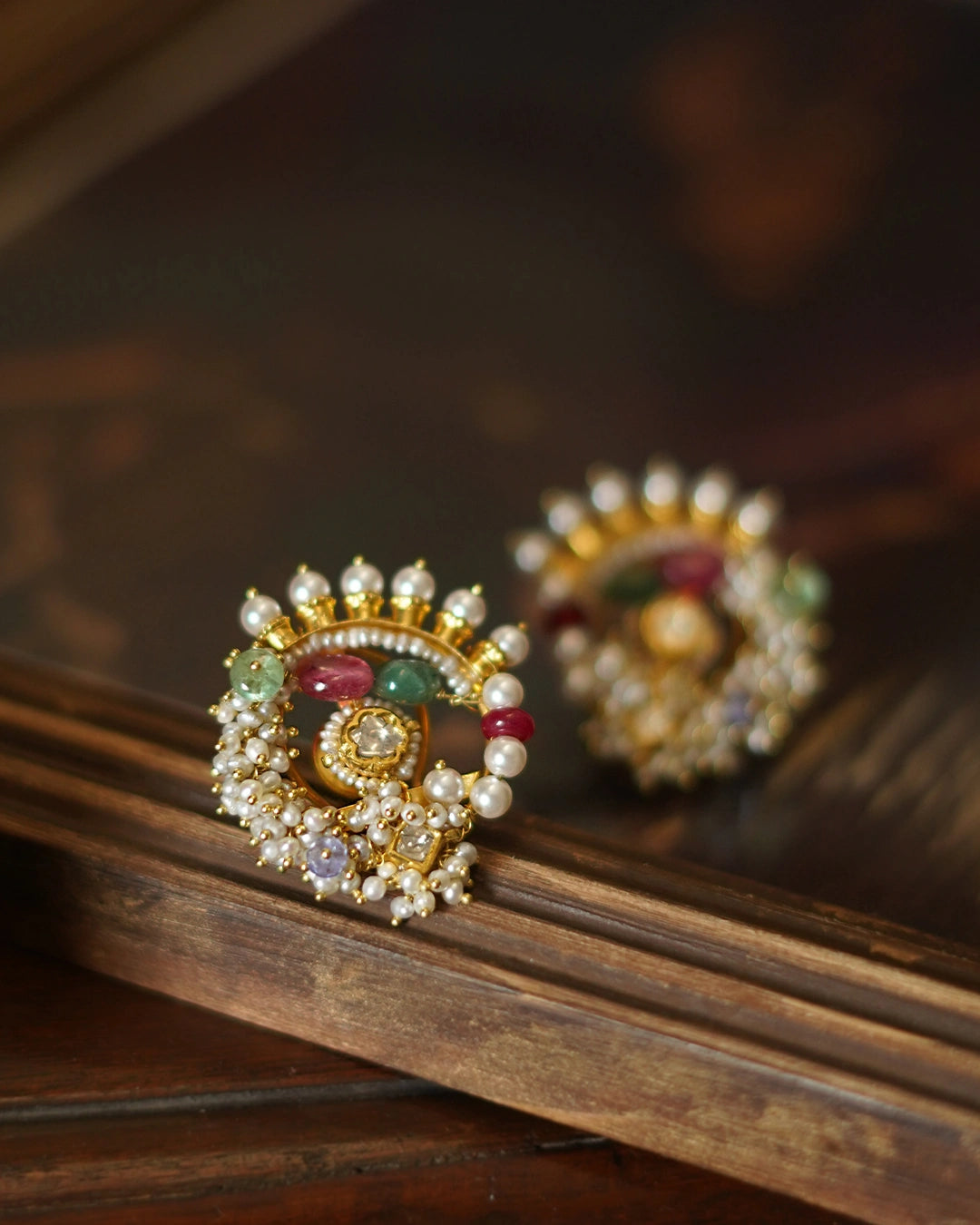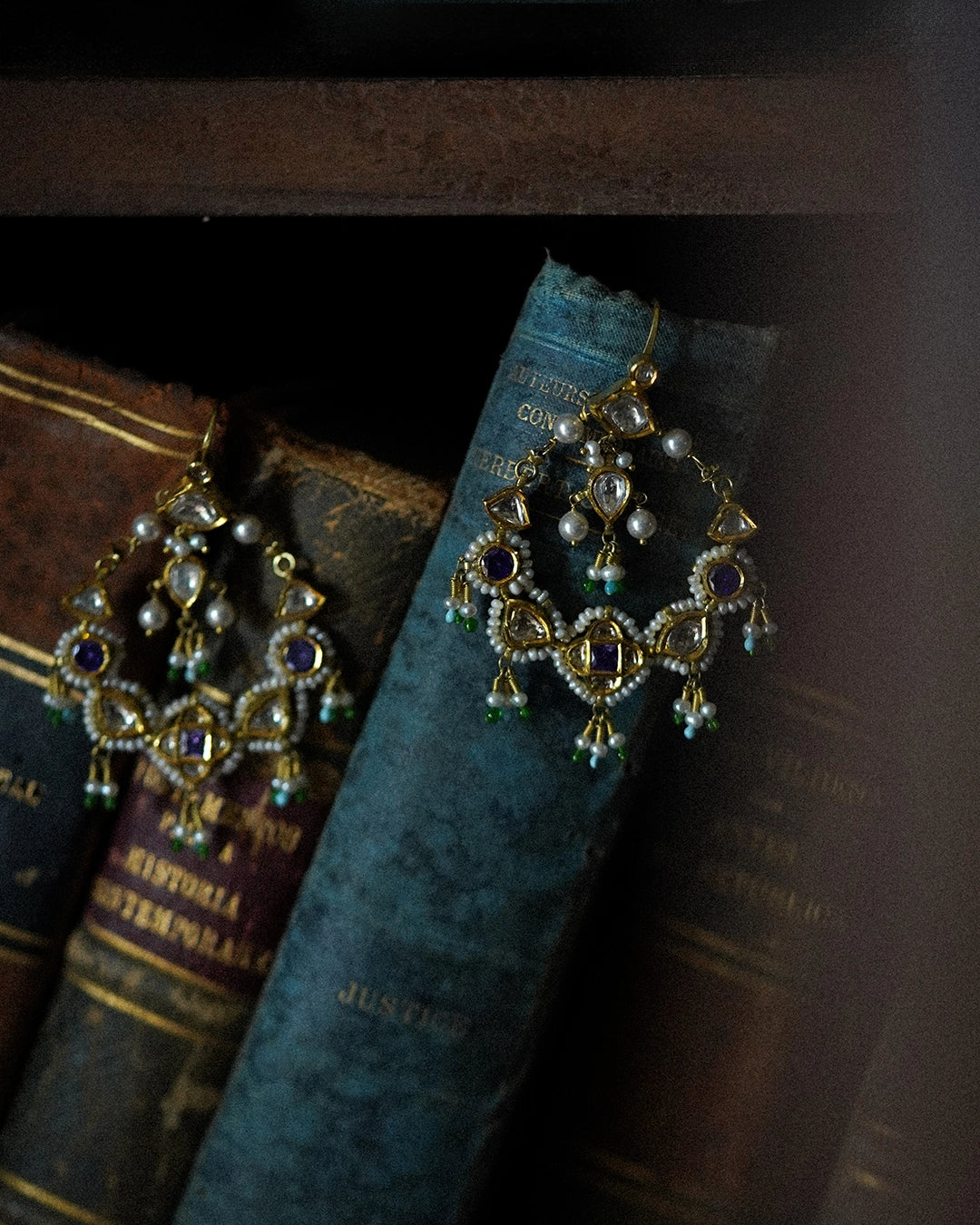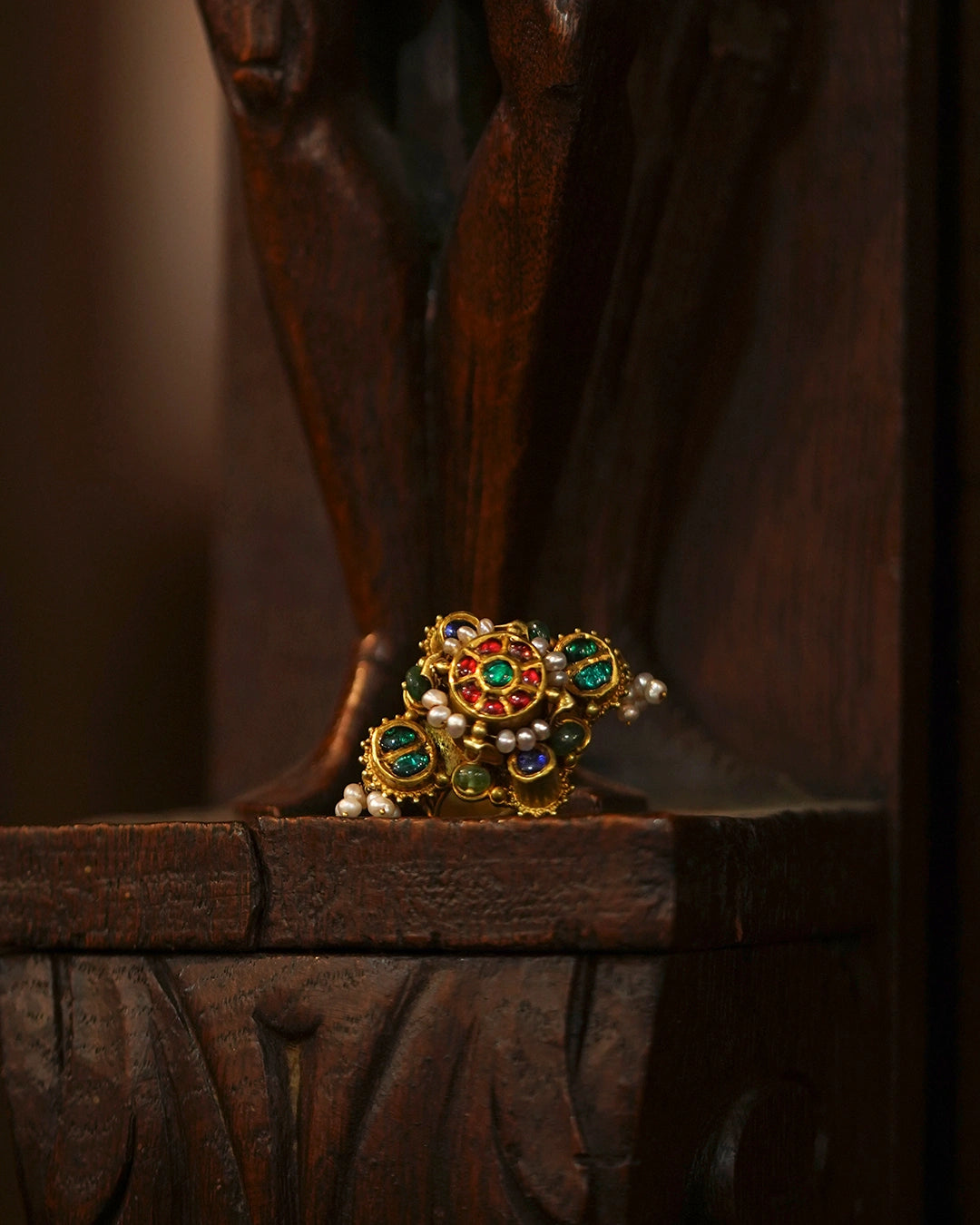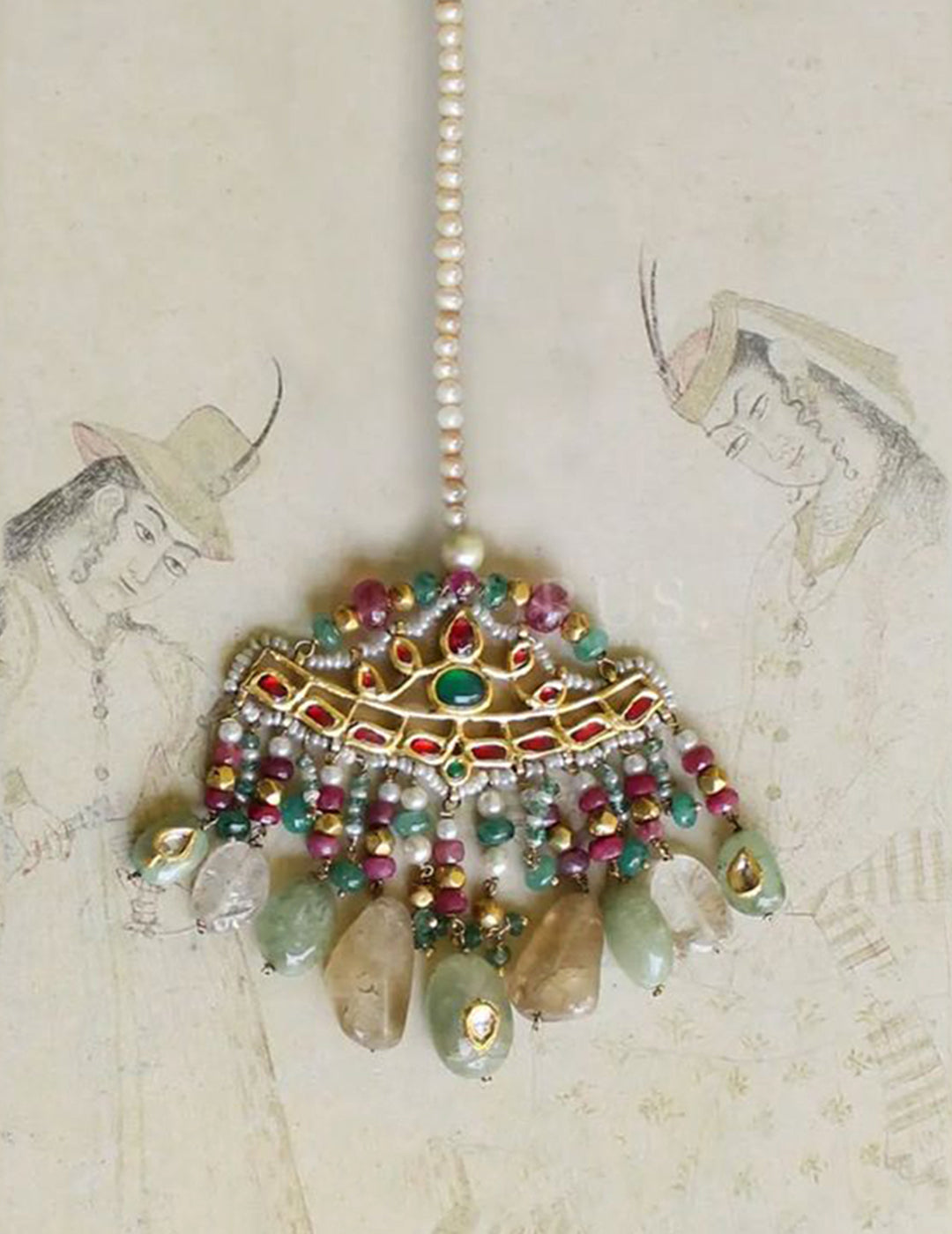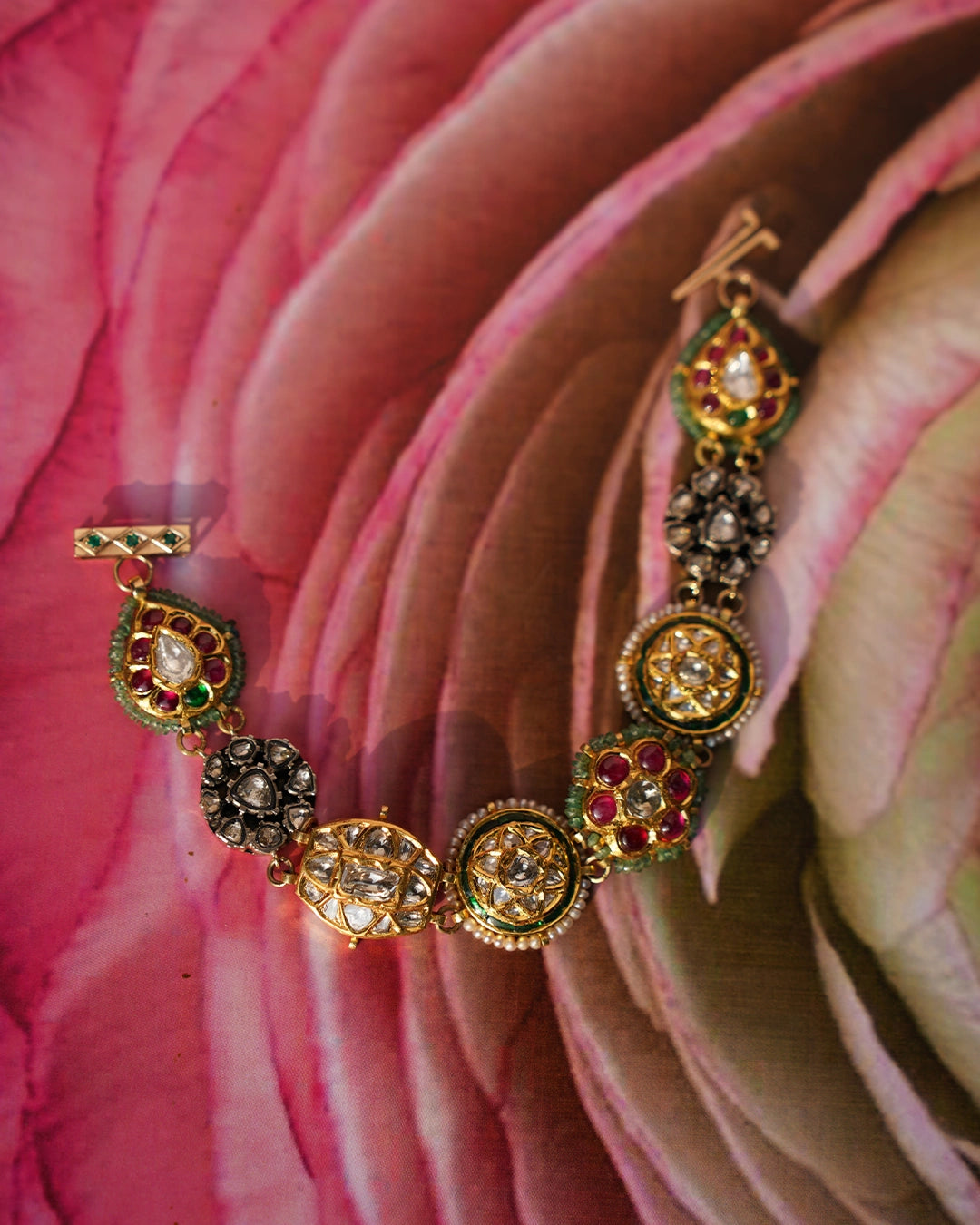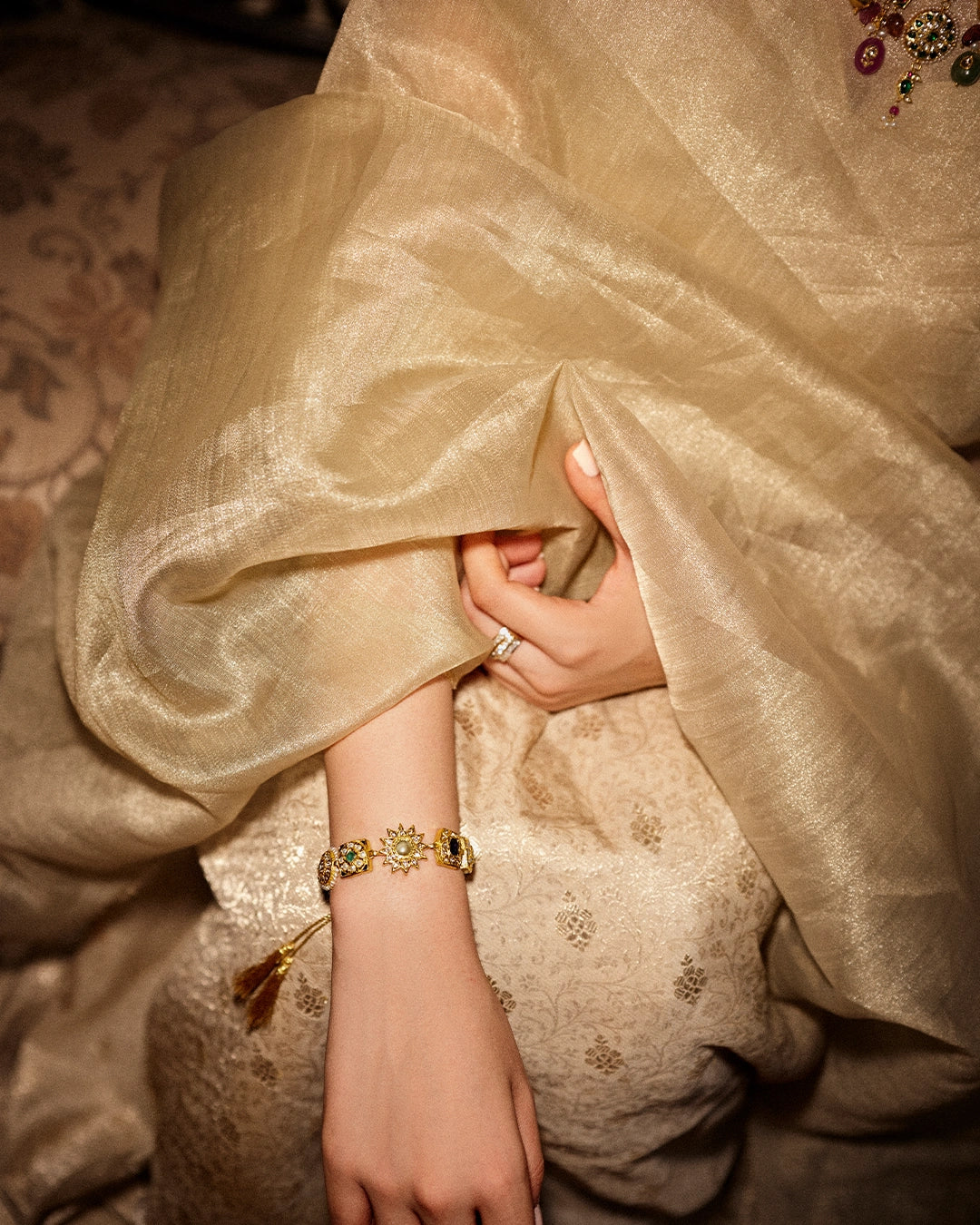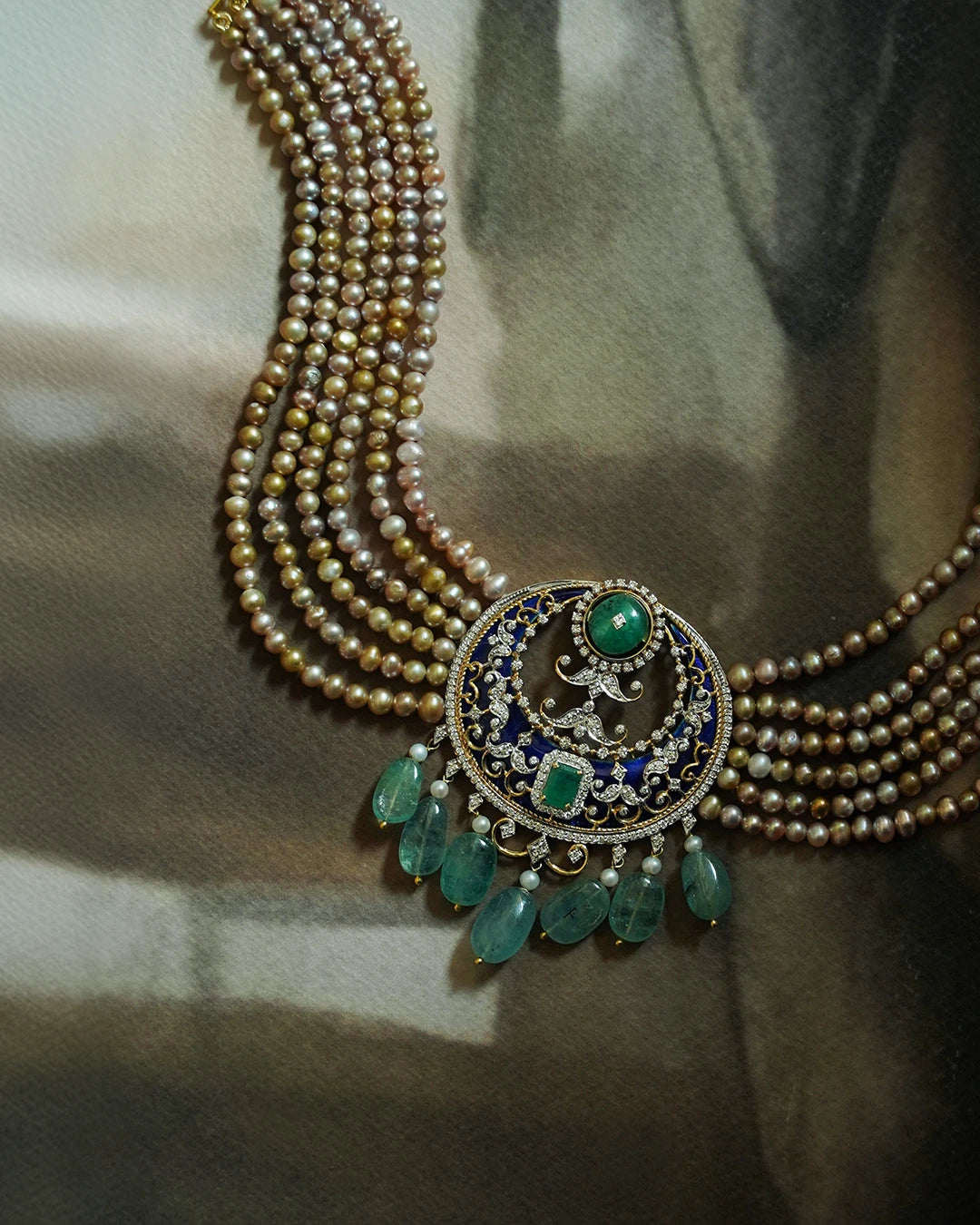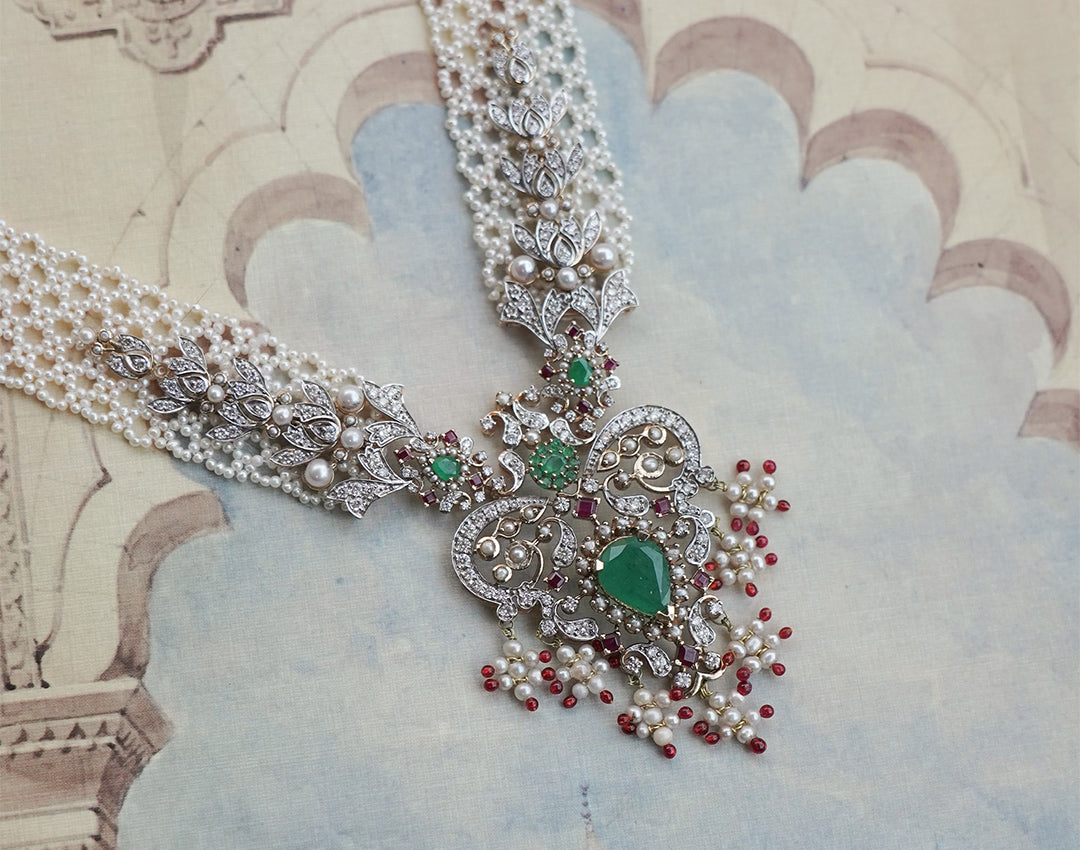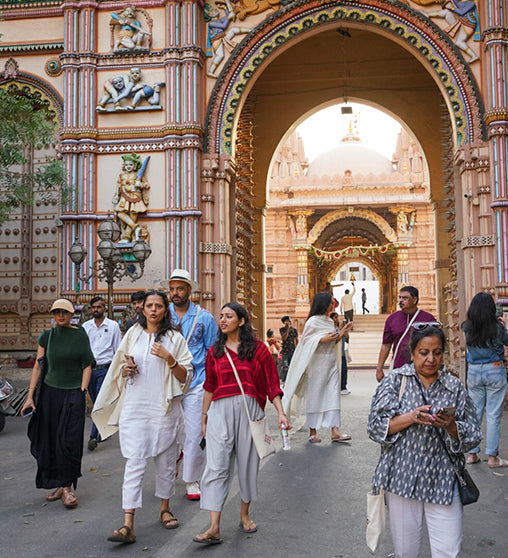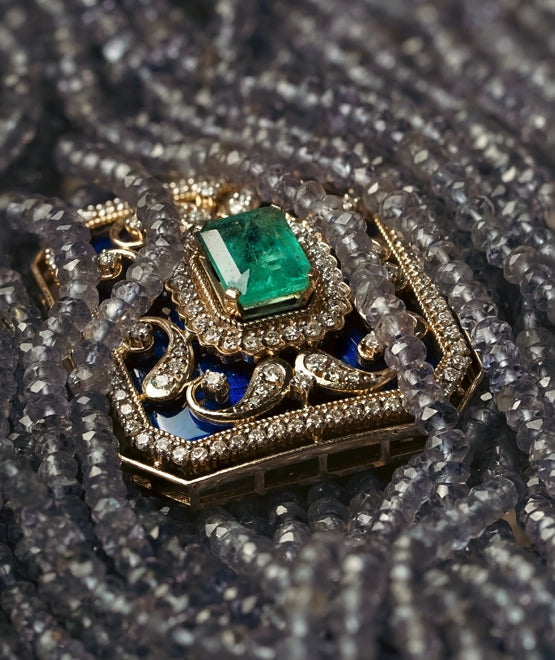Gold has a strong ritualistic context in the Indian subcontinent, being an important part of several religious ceremonies and offerings to the Gods and Goddesses. And not just religious significance, gold also has financial significance— it personifies wealth, and as a consequence, people have made serious efforts to possess as much of it as possible. Owing to its fiduciary value, gold has also been considered a “safe” option, and safeguarding one’s financial condition by buying gold jewelry has been a historical practice, especially among Indians.
Inflation reinforces in people the notion that only precious metals maintain a globally unchanging fiduciary value and owning them gives one a psychologically pleasant sense of security. Accumulating precious metals as jewelry has a long history, but it is more prevalent in India than anywhere else.

Image courtesy: Wikimedia Commons
Fluctuations in the prices of precious metals in India, such as gold, have developed into a reliable indicator of the level of public political and economic unease. Rural people, in particular, have developed a pragmatic, conservative outlook as a result of history's lessons. Consequently, bringing about social reform in a culture dominated by traditional values has been a nearly impossible task. A notable example is a backlash received by the Indian government circa 1960 in rebuttal to their attempt to shake the widespread Indian faith in the survival value of high-karat gold jewelry.
When FM First Came up With the Fateful Gold Control Act

Image courtesy: Wikimedia Commons
Morarji Desai, the then-finance minister, presented the Gold (Control) Act in 1962 when the country's foreign exchange deficit was aggravated by the border dispute with China. It was an attempt to control the sale and possession of gold in personal possession, thereby releasing some of India's much-needed undisclosed gold reserve, suspected to be the world's largest.
High demand for gold, combined with negligible indigenous production, resulted in gold imports, causing the Indian rupee to depreciate dramatically and deplete foreign exchange reserves to alarming levels. The depreciation of the Indian rupee caused sharp increases in food commodity prices due to the higher cost of petroleum product imports.
According to press reports, the act's long-term goal was to steer people away from purchasing gold and free at least a portion of the vast accumulation of gold frozen in the form of gold jewelry for using the precious metal in the country's economic development, along with building adequate gold reserves to shield the economy against volatility in foreign trade. The Act planned on achieving this feat by gradually reducing gold imports to a manageable level by imposing taxes and legal restrictions.
The Act's core provision was that gold jewelry could no longer be made in the typical Indian standard of 22K, but only in 14K. The government believed that if the purpose of the Act was made clear, people would understand its importance and eventually accept 14K gold. However, this belief proved to be highly inaccurate.
Another provision of the Act required people who possessed primary gold in any form other than gold jewelry, which accounted for approximately 85% of total possessions, to disclose holdings of more than 50 grams per adult and 20 grams per minor for taxation purposes.
The Backlash

Image courtesy: Pexels
Soon after the Act was passed, goldsmiths, refiners, and dealers across the country staged nationwide protests that lasted more than three years. The Indian population staunchly refused to accept 14K gold as the standard for gold jewelry, and goldsmiths saw a significant drop in business, putting many out of work. Protesting goldsmiths were arrested, and a number of them committed suicide.
As a result, the law was relaxed. Goldsmiths were allowed to create jewelry of a higher quality than 14K by repurposing ornaments from existing 22K gold jewelry. Despite being partially appeased, the goldsmiths persisted in their protest, demanding that the entire order be revoked.
Despite all efforts by the government to make people understand their reasoning for implementing the Act, the gold demand remained strong. Adding to the problem was the gargantuan workforce comprising goldsmiths, gold dealers, refiners, and others in related jewelry trades working in India—it was around 450,000 at the time. And the workforce could not be sustained under the existing regulations. As a result, smuggling became the norm.
Though government officials remained on alert, it was difficult to provide or contain smuggling because of India's extensive land borders and coastlines. 30–70% of the imported gold was smuggled, which was in the form of ingots of about 105 grams, the preferred type in India at the time. The stamps of purity and origin they bore facilitated their circulation since these stamps were accepted without question.
In contrast to the situation taking form throughout the country, an Informal Committee of Officials on Gold Control, formed to investigate and evaluate the effectiveness of the Act, remained steadfast in its conclusion that the Act should be upheld and even strengthened. They recommended bringing back the 14K provision for making gold jewelry, also warning that removing a strong belief from its roots required time, probably more than three years. However, Indira Gandhi, who was the Prime Minister during the time, gave in to the popular pressure and didn't bring it back.
Conceding Defeat and Modifications

Image courtesy: Wikimedia Commons
After all of these steps failed to produce the desired outcome, the Gold Control Act finally introduced in 1968 only prohibited citizens from owning gold in the form of bars and coins. All existing gold coin and bar holdings had to be converted to jewelry and declared to the authorities. Goldsmiths could not own more than 100 g of gold. Licensed dealers were not allowed to own more than 2 kg of gold, regardless of the number of artisans they employed. They were forbidden from trading with one another.
A limit was imposed on the possession of gold jewelry, and those who exceeded it, along with those who still own gold in primary forms (other than gold jewelry), were required to file a declaration for taxation purposes.
And this is how the people of India were able to defend their centuries-old practice of investing in gold jewelry for use in times of emergency. Gold still enjoys an extremely high status and a high fiduciary value to this day. It is the precious metal of choice for jewelry, particularly among urban denizens.



